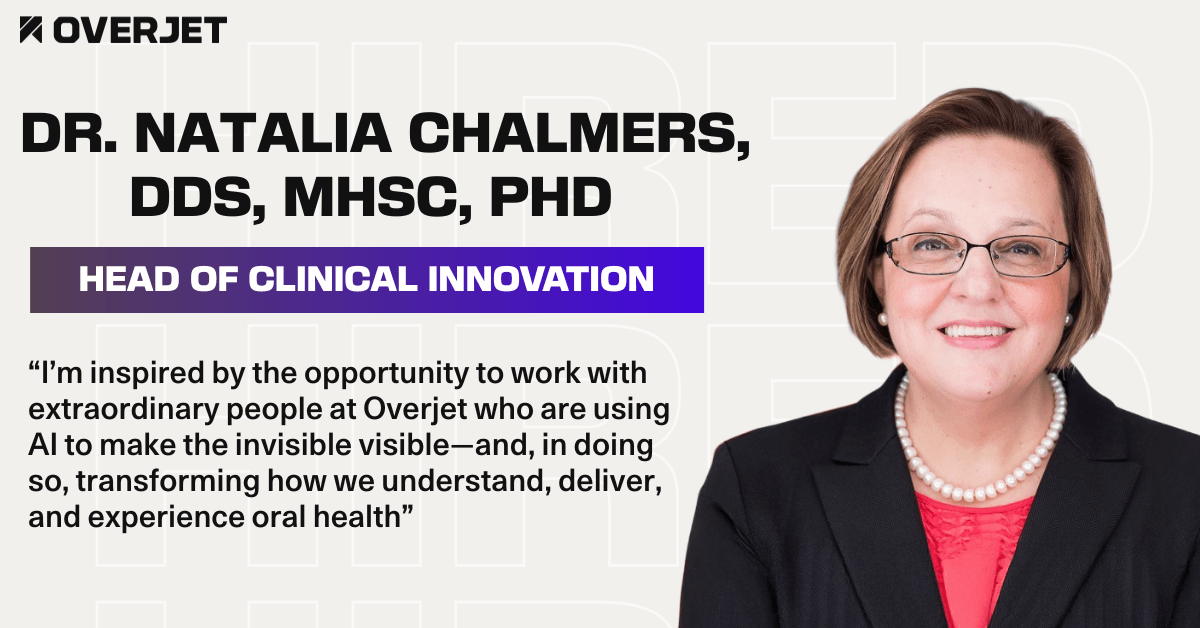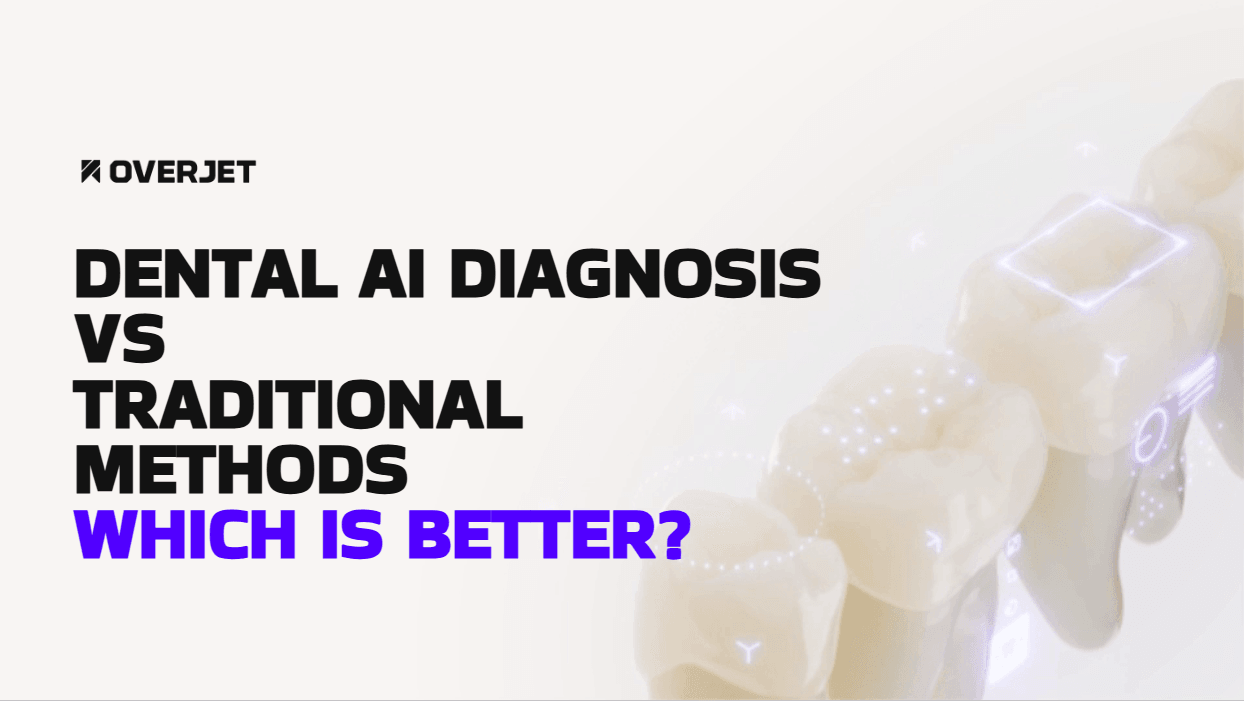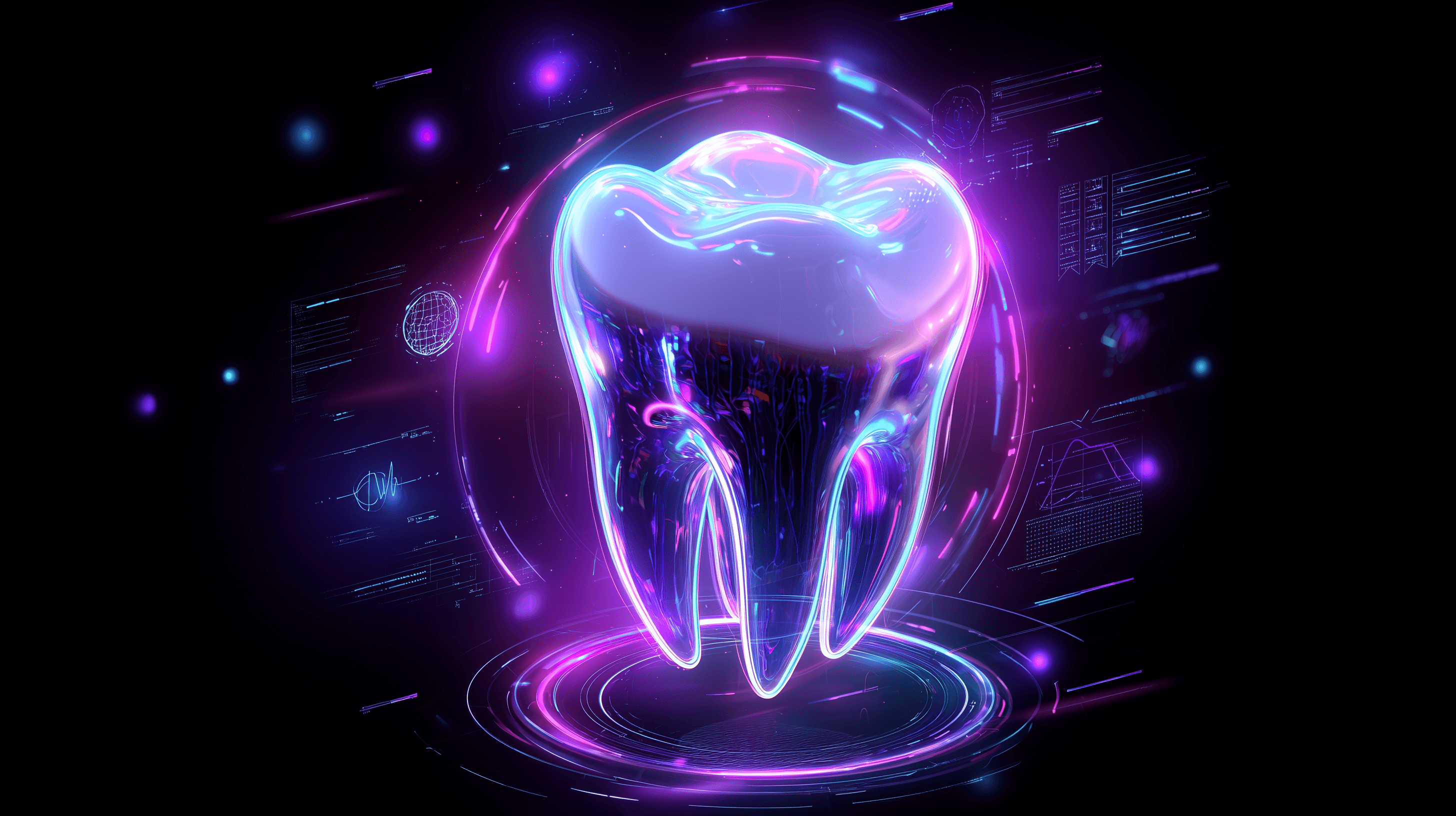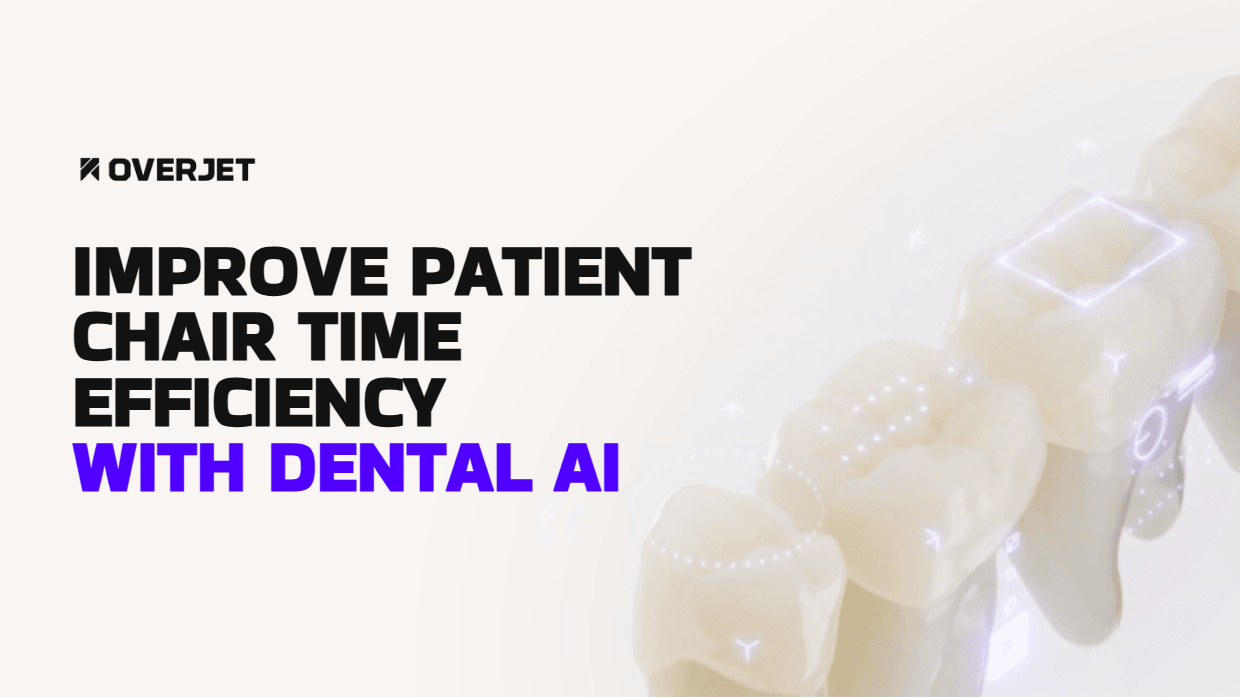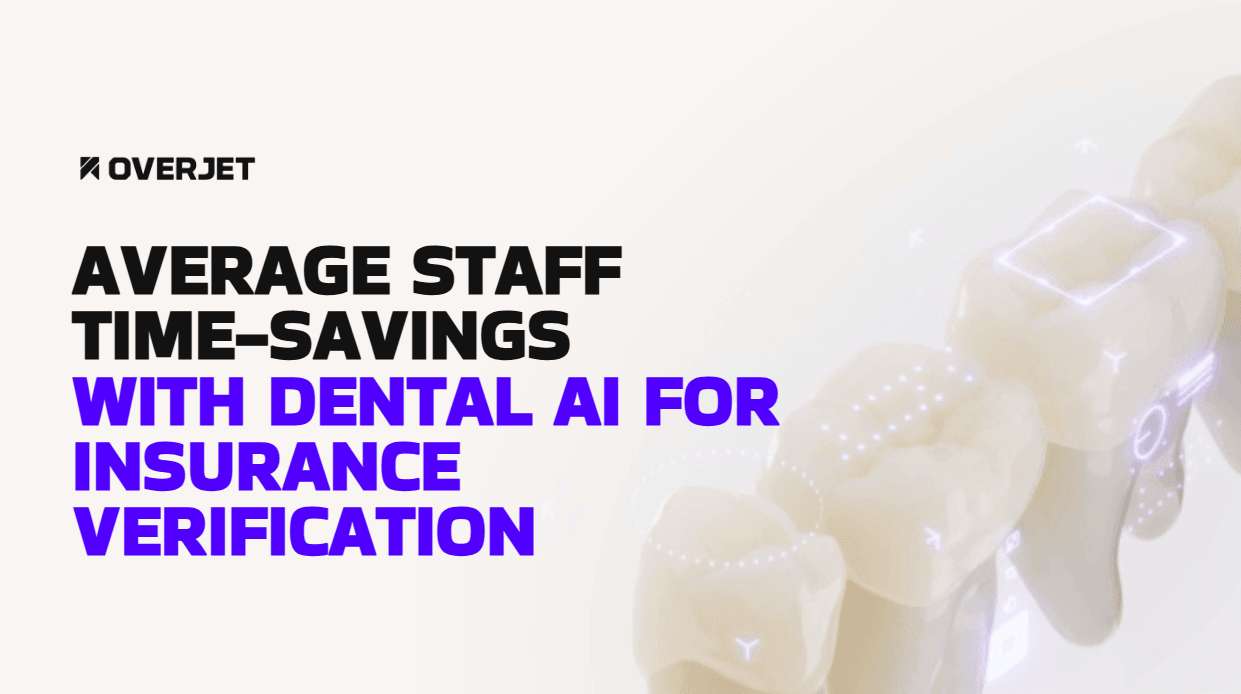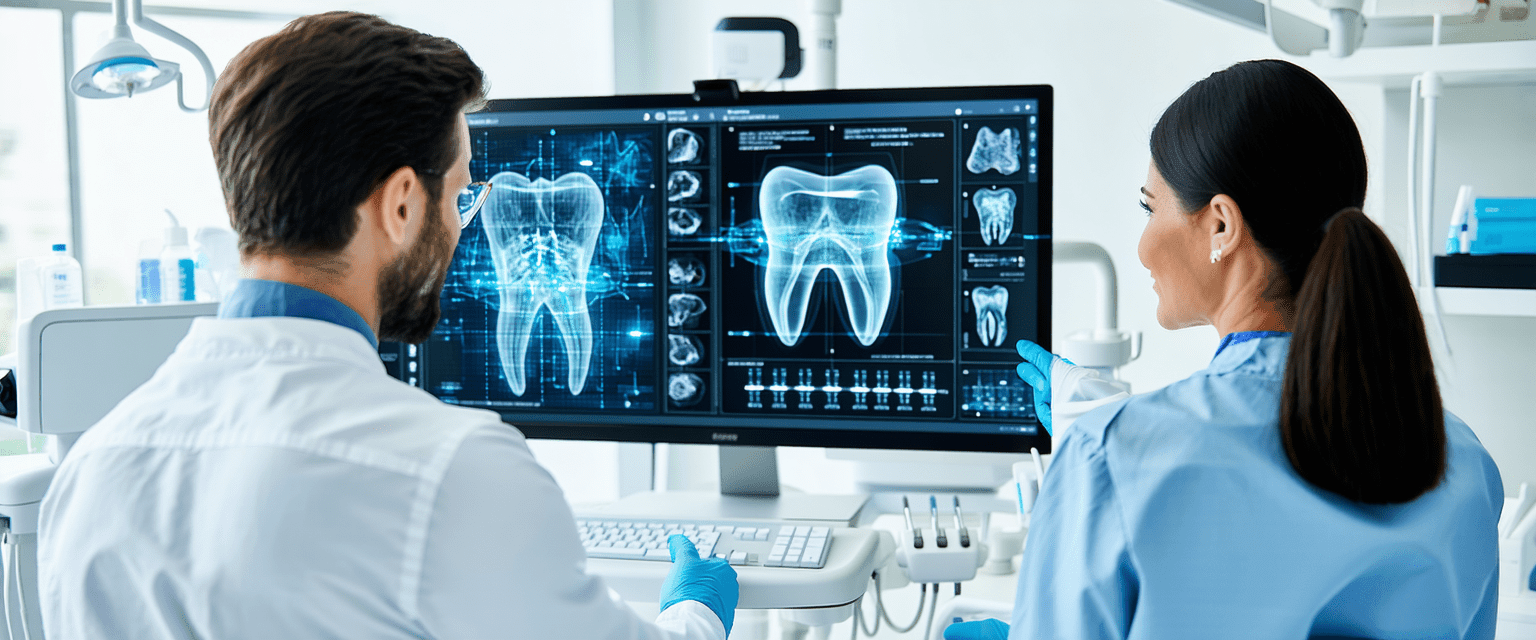Dental practice overhead consumes 60-65% of collections in the average practice, representing every expense except doctor compensation—from staff salaries and supplies to rent and technology investments. This percentage directly determines your take-home income and practice profitability, making overhead management one of the most impactful skills for practice success.
The difference between a 55% and 70% overhead practice collecting $1 million annually equals $150,000 in additional profit—money that could fund growth, technology upgrades, or simply improve your quality of life. This guide breaks down overhead benchmarks by practice size, reveals where your dollars actually go, and shows proven strategies to optimize costs without compromising patient care.
Explore Overjet's Dental AI Software
What Is Average Dental Practice Overhead?
Average dental practice overhead typically ranges from 60-65% of total collections, according to the American Dental Association. Overhead includes every practice expense except doctor compensation—staff salaries, supplies, rent, equipment, and administrative costs that keep your doors open each day.
Think of overhead as the percentage of every dollar collected that goes toward running your practice before you pay yourself. When overhead consistently exceeds 70%, your practice faces potential financial strain. Conversely, overhead below 55% might signal underinvestment in staff, technology, or patient care resources, which could limit growth.
National Median vs High-Performing Practices
The national median sits around 62% of collections, yet high-performing practices often maintain overhead between 55-60%. Top-tier practices achieve lower overhead through strategic technology adoption, streamlined workflows, and efficient staffing models.
Regional variations significantly impact overhead benchmarks. Urban practices face higher facility costs and staff wages, while rural practices struggle with lower patient volumes that spread fixed costs across fewer appointments.
Average Revenue of Dental Practice vs Net Profit
A practice collecting $1 million annually with 65% overhead retains $350,000 before doctor compensation. That same practice at 55% overhead keeps $450,000—a $100,000 difference that directly impacts your take-home income and reinvestment capacity.
Overhead Benchmarks by Annual Production Tier
Practice size fundamentally influences overhead percentages through economies of scale. Smaller practices typically carry higher overhead percentages, while larger operations achieve better cost efficiency through volume advantages.
Under $750k in Collections
Practices generating less than $750,000 annually often experience overhead ranging from 70-80% of collections. Fixed costs like rent, insurance, and base staffing represent a larger percentage of revenue when spread across fewer patients.
Technology investments and specialized equipment costs do not scale proportionally with patient volume at this level. However, focused efficiency improvements can significantly impact profitability for smaller practices.
$750k–$1.5M in Collections
Mid-size practices typically achieve overhead percentages between 60-70%, representing the most common revenue tier in general dentistry. This range allows for adequate staffing, technology investments, and facility costs while maintaining reasonable profitability.
Practices in this tier often benefit most from optimizing scheduling efficiency and supply chain management. Strategic technology adoption, including AI diagnostic tools like Overjet’s imaging platform, can improve case acceptance rates while streamlining administrative workflows.
Above $1.5M in Collections
High-volume practices frequently maintain overhead below 60% through operational scale advantages. Large practices distribute fixed costs across more patients while negotiating better supplier terms and implementing advanced practice management systems.
Technology investments yield higher returns at this scale, particularly automated systems that reduce administrative burden and improve patient throughput without proportional staff increases.
Multi-Location DSO Benchmarks
Dental support organizations typically achieve overhead percentages in the 50-55% range through centralized operations and bulk purchasing power. Administrative functions like billing, credentialing, and supply procurement benefit from economies of scale across multiple locations.
DSOs leverage advanced technology platforms more effectively by implementing comprehensive AI solutions like Overjet’s diagnostic and administrative automation tools across their entire network.
Dental Office Cost Breakdown by Category
Understanding where overhead dollars flow helps identify optimization opportunities and benchmark against industry standards. Each category represents specific percentages of collections in well-managed practices.
Staff and Payroll
Many practices started adding or enhancing employee benefits to remain competitive in the tight labor market during 2021-2024. Unfortunately, during that time, health insurance premiums also increased in cost significantly (2024 Dental Practice Overhead Percentages).
Personnel costs typically consume 25-30% of collections, representing the largest overhead category for most practices. This includes salaries, benefits, payroll taxes, and temporary staffing expenses across clinical and administrative roles.
Clinical staff costs: Hygienists, assistants, and specialists typically account for 15-20% of collections
Administrative staff costs: Front desk, billing, and practice management roles usually represent 5-8% of collections
Benefits and taxes: Health insurance, retirement contributions, and payroll obligations add another 3-5%
Efficient staffing ratios and cross-training programs help optimize personnel costs while maintaining service quality.
Clinical Supplies and Lab Fees
Supply and laboratory costs generally account for 6-8% of collections in well-managed practices. Variable expenses fluctuate with patient volume and case complexity, requiring careful inventory management and vendor relationships.
Digital workflows and in-house capabilities minimize external laboratory dependencies while reducing per-case costs.
Facility and Equipment
Facility-related expenses typically represent 6-10% of collections, including rent or mortgage payments, utilities, maintenance, and equipment leases. Fixed costs require long-term strategic planning and efficient space utilization.
Equipment financing strategies and technology lifecycle planning help spread major capital investments across multiple years while maintaining competitive clinical capabilities.
Marketing and Patient Acquisition
Marketing investments usually range from 2-4% of collections, encompassing digital marketing, patient communication systems, and referral programs. Effective marketing generates measurable returns through new patient acquisition and case acceptance improvement.
Modern marketing increasingly relies on technology platforms that automate patient communication and track campaign effectiveness.
Technology and Software
Technology expenses typically account for 1-3% of collections but deliver disproportionate value through efficiency gains. According to the American Dental Association’s 2023 Survey of Dental Practice, this range remains consistent for most general practices, though technology costs may fluctuate as practices invest in new digital tools and cybersecurity solutions. Practice management software, imaging systems, and AI diagnostic platforms like Overjet represent essential infrastructure investments that reduce administrative burden while improving diagnostic accuracy.ADA HPI 2023
Fixed vs Variable Expenses Explained
Distinguishing between fixed and variable costs helps predict how expenses change with patient volume fluctuations. This understanding proves crucial for budgeting, forecasting, and identifying cost control opportunities.
Fixed Cost Benchmarks
Fixed expenses remain constant regardless of patient volume, typically representing 40-50% of total overhead. Rent, insurance premiums, equipment leases, and base staffing levels maintain practice operations whether you see 20 patients or 40 patients daily.
Understanding fixed cost structure helps determine minimum revenue requirements for practice viability and break-even analysis.
Variable Cost Benchmarks
Variable expenses fluctuate directly with patient volume and procedure complexity, usually accounting for the remaining 50-60% of overhead. Supply costs, laboratory fees, and commission-based compensation represent primary variable expense categories.
Monitoring variable cost ratios helps identify efficiency opportunities and predict expense changes with volume fluctuations.
How to Calculate Your Overhead on a P&L Statement
Accurate overhead calculation requires systematic financial analysis using consistent accounting methods. Most practice management software generates reports that facilitate this analysis.
1. Gather Twelve Months of Financials
Annual data provides accurate overhead calculations by smoothing seasonal variations in both revenue and expenses. Monthly fluctuations in patient volume, insurance reimbursements, and supply purchases can skew short-term calculations significantly.
Compile total collections and all practice expenses excluding doctor compensation from your profit and loss statements.
2. Categorize Expenses Consistently
Standard dental practice chart of accounts helps ensure accurate overhead calculation and meaningful benchmark comparisons. Exclude owner draws, profit distributions, and personal expenses that don’t represent true practice operating costs.
Include all legitimate business expenses: staff wages, benefits, supplies, rent, utilities, insurance, marketing, and professional services.
3. Divide Total Expenses by Collections
The overhead percentage calculation divides total operating expenses by gross collections, then multiplies by 100. For example, $600,000 in expenses divided by $1,000,000 in collections equals 60% overhead.
This percentage becomes your baseline for comparison against industry benchmarks and tracking improvement over time.
Common Reasons Overhead Escalates
Recent 2024 data shows “the increase in overhead in 2024 was 5.1%” and “Overhead seems to now be rising at about 5% per year, and this may be the new normal” (Higher production helps offset chronic overhead increases | Dental Economics). This supports the article’s discussion of overhead escalation and provides current context on rising practice costs.
Several factors commonly drive overhead percentages above optimal ranges, often developing gradually until they significantly impact profitability. Identifying patterns early enables proactive management and correction.
No-Shows and Low Chair Utilization
Appointment gaps and patient cancellations directly increase overhead percentages by reducing collections while fixed expenses remain constant. A practice with 20% no-show rates effectively operates with 20% higher overhead than scheduled capacity suggests.
Automated appointment confirmation systems and strategic overbooking help minimize schedule gaps and optimize chair utilization without overburdening staff.
PPO Write-Offs and Fee Compression
Insurance plan participation often requires significant fee reductions that increase effective overhead percentages. When reimbursements decline while expenses remain constant, overhead ratios deteriorate even with stable patient volume.
Regular insurance plan analysis helps identify unprofitable contracts and optimize payer mix strategies for better financial performance.
Inventory Waste and Spoilage
Excessive supply ordering, expired materials, and poor inventory rotation increase overhead through waste and carrying costs. Dental supplies represent significant investments that require careful management and usage tracking.
Inventory management systems and regular audits help minimize waste while ensuring adequate supply availability for patient care.
Employee Theft or Fraud
Internal control weaknesses can result in significant overhead increases through theft, embezzlement, or billing fraud. These problems often develop gradually and may remain undetected without proper monitoring systems.
Regular financial reviews, segregation of duties, and monitoring software help prevent and detect internal fraud before it impacts practice profitability.
Five Steps to Reduce Overhead Without Cutting Care
Sustainable overhead reduction requires strategic approaches that maintain or improve patient care quality while optimizing operational efficiency. These methods focus on eliminating waste and improving productivity rather than reducing service levels.
1. Optimize Scheduling and Recall
Efficient scheduling maximizes chair time utilization while minimizing gaps and overtime expenses. Strategic appointment blocking, buffer time management, and proactive recall systems help maintain consistent patient flow throughout each day.
Automated recall and appointment confirmation systems reduce no-shows while optimizing schedule density for maximum productivity.
2. Renegotiate Supply and Lab Contracts
Regular vendor negotiations and competitive bidding help reduce supply costs without compromising quality. Group purchasing organizations and bulk ordering agreements often provide significant savings opportunities that compound over time.
Annual contract reviews and vendor performance evaluations ensure optimal pricing and service levels across all supplier relationships.
3. Automate Insurance Verification
Manual insurance verification consumes significant staff time while creating opportunities for errors and claim denials. Automated verification systems reduce administrative burden while improving claim acceptance rates and reducing collection challenges.
Real-time eligibility checking prevents treatment delays and reduces collection challenges from coverage issues that arise during patient visits.
4. Implement AI-Based Diagnostic Support
Overjet’s AI imaging platform enhances diagnostic accuracy while improving patient communication and case acceptance rates. Advanced imaging analysis helps identify treatment needs earlier and communicate findings more effectively to patients through clear, annotated visuals.
AI-powered diagnostic support also streamlines insurance claim documentation and reduces administrative time requirements for complex cases.
5. Track KPIs Monthly
Regular monitoring of key performance indicators enables proactive overhead management and early problem identification. Monthly tracking of overhead ratios, productivity metrics, and cost categories helps maintain optimal financial performance through data-driven decisions.
Consistent measurement and benchmarking support continuous improvement initiatives that compound benefits over time.
Leveraging Dental AI to Lower Administrative Overhead
Artificial intelligence solutions specifically target administrative inefficiencies that contribute to elevated overhead percentages. Technology automates routine tasks, reduces errors, and accelerates workflows while improving patient care quality.
Insurance Claim Automation
Overjet’s automated claim processing reduces administrative time while improving approval rates through enhanced documentation and coding accuracy. AI-powered systems analyze imaging data to support treatment necessity and streamline prior authorization processes that often delay patient care.
Automated claim submission and tracking eliminate manual data entry while reducing processing delays and denials that impact cash flow.
Real-Time Imaging and Case Acceptance
AI-enhanced imaging provides immediate diagnostic insights that improve patient communication and treatment acceptance. Clear, annotated visuals help patients understand treatment recommendations while supporting informed consent processes that build trust.
Enhanced case presentation capabilities often improve treatment acceptance rates, directly impacting practice revenue and overhead ratios through increased production.
Credentialing and Compliance Workflows
Automated credentialing and compliance management reduce administrative burden while ensuring regulatory compliance. These systems track licensing requirements, continuing education, and insurance participation status automatically without manual oversight.
Streamlined administrative workflows free staff time for patient-focused activities while reducing compliance risks and associated costs.
How Overhead Affects Practice Valuation and EBITDA
Practice overhead directly impacts valuation metrics and sale prices when owners consider exit strategies. Buyers evaluate overhead ratios as indicators of operational efficiency and future profitability potential.
Overhead Targets for Attractive Multiples
Practices with overhead below 60% typically command premium valuation multiples due to demonstrated operational efficiency and profit potential. Well-managed overhead indicates strong systems, processes, and management capabilities that buyers value highly during acquisition evaluations.
Consistent overhead performance over multiple years demonstrates sustainable operational excellence rather than temporary improvements that might not continue under new ownership.
Adjusted EBITDA vs Net Income
Practice valuation calculations often adjust EBITDA to normalize overhead expenses and owner compensation. Adjustments help buyers understand true operational profitability and cash flow potential without personal expenses or one-time costs that don’t represent ongoing operational requirements.
Overhead normalization removes expenses that don’t transfer to new ownership, providing clearer pictures of practice earning potential.
Transform Overhead Management With AI Insights From Overjet
Overjet’s comprehensive AI platform addresses multiple overhead categories simultaneously through intelligent automation and diagnostic support. The integrated approach to imaging analysis, claim processing, and administrative workflows delivers measurable overhead reduction while enhancing patient care quality.
Practices implementing Overjet’s solutions typically see improved case acceptance rates, reduced administrative time, and faster insurance processing—all contributing to better overhead ratios and increased profitability. The platform’s real-time analytics and reporting capabilities also support ongoing overhead monitoring and optimization efforts.
Book a demo to discover how Overjet’s AI solutions can transform your practice’s overhead management and operational efficiency.
Ready to See Overjet's Dental AI in Action?
Frequently Asked Questions (FAQs)
Does overhead differ for orthodontic, pediatric or oral surgery practices?
Specialty practices typically maintain different overhead benchmarks due to varying equipment costs, staff requirements, and supply needs. Orthodontic practices often achieve lower overhead percentages due to fewer consumable supplies and longer treatment cycles, while oral surgery practices may have higher overhead from specialized equipment and facility requirements.
How often should I update my overhead benchmarks?
Calculate overhead percentages monthly and compare against annual benchmarks quarterly to identify trends early. Market conditions, insurance changes, and practice modifications require regular monitoring to maintain optimal financial performance and identify improvement opportunities promptly.
What is a reasonable percentage to spend on technology?
Technology investments typically represent 1-3% of total collections while focusing on solutions that deliver measurable returns through improved efficiency and patient outcomes. Overjet’s AI platform demonstrates clear ROI through enhanced diagnostics, improved case acceptance, and reduced administrative burden that directly impacts overhead ratios.



